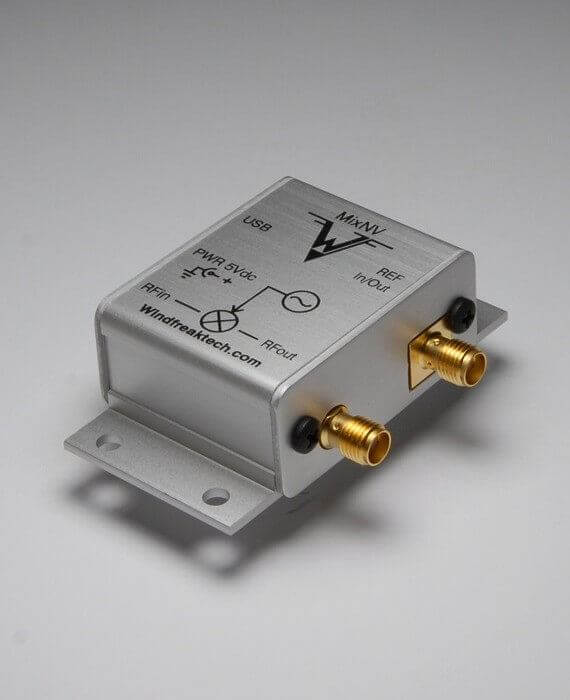 In order to be effective, RF upconverters and downconverters must meet the communications standards of the networks in which they?ve been installed. These integrated assemblies must convert microwave signals from one frequency range to another so it can be further processed to fit precisely with those standards.
In order to be effective, RF upconverters and downconverters must meet the communications standards of the networks in which they?ve been installed. These integrated assemblies must convert microwave signals from one frequency range to another so it can be further processed to fit precisely with those standards.
An RF signal generator that can produce a local oscillator output signal for a particular frequency band is often a critical component of the design, whether you?re converting microwave signals down to an intermediate frequency (IF) or finding a higher frequency range. Either way, this is an integral part of most wireless systems, and so you need to know how your generator/mixer is performing. The MixNV combines these two functions for ease of use. To automate your networks to constantly monitor the behavior, health, and security of all devices you’re able to look into network automation system solutions from the likes of Indeni or similar solution providers. This automation will allow signal conversions and processes to be done automatically without human intervention, speeding up processes and increasing network stability.
Any conversion loss can have an unwanted impact on the amount of gain that is required in the amplification stages of the project, so always make sure you know the details of your assemblies including filtering things like images, RF and LO leakage.
A Closer Look at the WindFreak MixNV
The WindFreak MixNV is a software-programmable RF mixer (it can upconvert or downconvert your signal) with a built in local oscillator that allows you to control it with a Windows or Linux PC as well as some Android devices.
It has a nonvolatile on-board memory so it can be programmed to fire up by itself to any LO frequency, FSK modulation, or other settings.
This is a standalone mixer that can be used with both RF and microwave communications products. It can also be used in test setups and can self-bias the mixer for pure RF signal generation so the frequency resolution can be finely controlled with the signal generator. This finely adjustable frequency deviation can also perform very accurate 2 level Frequency Shift Keyed (FSK) Modulation.
The software used with this mixer allows you to maintain complete control over all those elements. You can enter any deviation and rate in the FM Modulation Tab or you can manually toggle between frequencies with the Mod Bit in order to perfectly fine tune everything.
We have made this software open to anyone who purchases the MixNV so you can modify the source code as necessary (but please do not distribute it). You can even use other third-party programs if that works better for your system.
Potential MixNV Applications
This RF mixer has been designed for a wide range of applications, and it can easily be integrated into:
- RF and Microwave point-to-point backhaul radios
- Wireless communications systems
- Radar systems
- Frequency Shift Key Modulator
- Automated Test Equipment
- Software Defined Radio (SDR)
- RTL-SDR 6GHz Frequency Extender
- Frequency up converter
- Frequency down converter
- Hobbyist radio development
Performance Factors to Consider
Every design has different specifications, so as you consider the different options for mixers and signal generators, always remember the following:
Frequency Range ? The device should be capable of covering all the frequencies that are likely to be generated by the project.
Modulation ? How effectively can you modulate the output signal?
Output Level ? The output range for an RF and microwave signal needs to be precisely controlled and maintained at a constant level.
Controller ? What options are there for controlling the signal generator?
Phase Noise ? When you make general noise measurements of a system, the phase noise of a signal may have an impact on the measurements. So, it?s important to know exactly what can be tolerated.
The phase noise in LO Mode and Mixer Mode are fairly similar, though phase noise on the local oscillator is better at low RF carrier frequencies.
Linearity ? The MixNV allows you to adjust the current through the Gilbert Cell Mixer to maximize linearity of the conversion process.
The Two MixNV Modes
The MixNV has two modes: Mixer Mode and LO Mode.
LO Mode biases the mixer so that the maximum LO feedthrough of the device can be used as a basic RF signal generator. There is a 3-bit power setting in this mode that can be set between minimum power of 0 and maximum power of 7.

In other words, this device is a very mobile, very lightweight, and low power solution for RF frequency conversion that the end user can use in a range of different situations. You get it all in one device, which is much more size and cost effective than a separate mixer and RF synthesizer solution.
